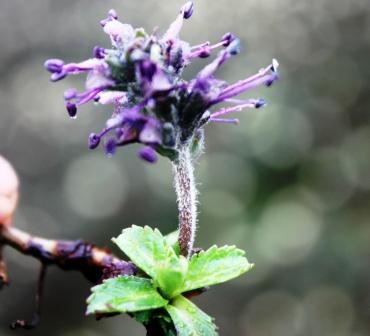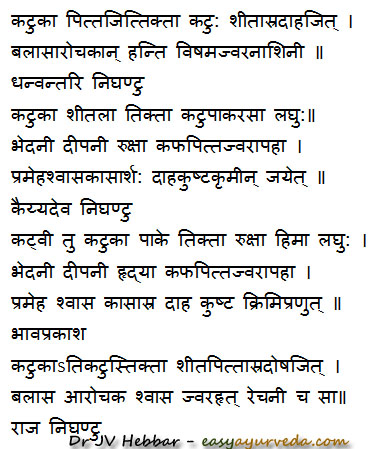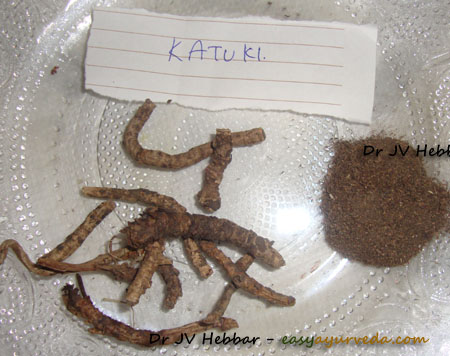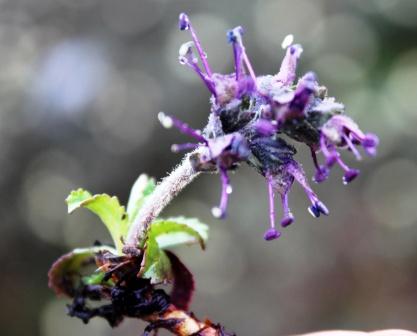Kutki- picrorhiza kurroa Benefits, Dose, Side Effects, Research
Kutki – Picrorhiza kurroa is a bitter root of a perennial herb with presence of rhizomes, used in treating mainly chronic fever, skin disorders and diabetes. It is also used in purgation (Virechana Panchakarma) procedure
In Ayurveda, it is also well known as Katuki or Katukarohini. In English it is recognized by the names Picrorrhiza, Hellebore, Yellow gentian etc.
Katuki is known to be a cooling agent possessing the ability to pacify pitta and kapha dosha, without disturbing the digestive fire.
Botanical Name: Pichrohiza Kurroa Royle ex. Benth
Family- SCROPHULARACEAE (Tikta Kula)

Table of Contents
Medicinal qualities
Kutki medicinal qualities:
Rasa (Taste) – Tikta (Bitter)
Vipaka – taste conversion after digestion- Katu (pungent)
Guna (qualities)-Ruksa, Laghu (light to digest)
Veerya- Sheeta (cold potency)
Effect on Tridosha – Balances Kapha and Pitta
Part used, dosage
Part used- Root, Underground stem (Rhizome & Roots)
Dosage- Powder 0.5-1 g (therapeutic) and 3-6 g (purgative)
Morphology
Creeping herb, which spreads by stolon. A whorl of radical leaves arises from the rhizome tip.
Root- Primary root grows maximum up to 38 cm in length, Many adventitious roots arise from the rhizome.
Shoot-Stem is represented by stolon and underground rhizomes which bear leaves and flowering scape.
Leaves- Leaves are 5-10 cm long, oval in shape with a sharp apex, flat and serrate.
Inflorescence- Indeterminate spike forming more or less a triangular head. –
Flower-Flowers are white or pale purple, bisexual and having convex thalamus.
Fruit- Capsule, 1-15 cm long and oval shaped.
Seed- Extremely small sized 1 mm long and 1 mm. wide. Embryo is enclosed in the large bladdery loose hyaline retic late taste.
Useful part-Rhizome
Rhizome is straight or slightly arched, cylindrical. Outer surface is gray creamish brown in color, bearing impressions of round root scars and numerous scales. Rhizome terminates in a scaly bed or stem. A transversely cut portion of the rhizome shows smooth dark brown surface with large creamish vascular bundles arranged in a prominent broken ring. On breaking becomes short pieces and black powders spread around, having a faint odour which is disagreeable. Taste is very bitter
Uses
Katuki contains various important phytochemicals like iridoids, cucurbitacins and acetophenones. The iridoid glycosides compound contains picroside I and II, as their bioactive components.
The other principles are pikuroside, phenol glycosides, veronicosides, 4-hydroxy-3-methoxy acetophenone picein, androsin, drosin, monocyclic phenolic compounds like apocyanin, mannitol, cinnamic acid, ferulic acid and vanilic acid.
In India Katuki is found in Himalayan regions like from Garwal to Bhutan and Kashmir to Sikkim;Other habitats are Pakistan, Tibet, west of China and north Burman regions.
Scientists have found its potent anti-diabetic,anti asthmatic,anti inflammatory,hepatoprotective and immuno-modulatory activities.
According to Ayurveda it acts as a very good carminative, bitter tonic, liver stimulant, laxative, blood purifier, stomachic, cholagogue (promotes the flow of bile from the gallbladder into the duodenum), anti-viral, antipyretic wormicide etc.
Usually it is believed to be the drug of choice in the treatment of jaundice.
Arogyavardhani is a well known combination containing a significant amount of Katukarohini.
Sanskrit verses

Traditional Uses
Asrajit – being coolant, useful in bleeding disorders such as menorrhagia, nasal bleeding etc.
Dahajit – relieves burning sensation (as in case of diabetic neuropathy)
Arochaka – useful in anorexia
Vishamajvara – useful in chronic recurrent fever
Bhedani, Rechani – piercing, causes purgation / diarrhea
Deepani – improves digestion and metabolism
Hrudya – good for heart
Kapha Pitta Jwarapaha – useful in fever of Kapha and Pitta origin.
Prameha – useful in urinary tract disorders, diabetes
Shvasa – useful in asthma, dyspnoea,
Kasa – useful in cough, cold,
Kushtahara – useful in skin disorders
Orally, it is used in the treatment of Vitiligo, jaundice, hepatitis and rheumatoid arthritis.
It acts as a potent liver stimulant. In higher doses, it acts as purgative.
It is very useful in relieving intestinal worm infestation
It is useful in weight loss treatment.
Useful in restoration of liver functions after alcohol toxicity.
The katuki is cold in potency and has a pungent vipaka [post digestive taste]. It possesses dryness and lightness as its attributes.
By the virtue of the presence of bitterness taste, pungent vipaka, dryness; lightness attributes and cold potency, the katuki aggravates vata dosha.
The combination of bitter taste and cold potency of katuki enacts mitigation of aggravated pitta dosha, when given in prescribed format of lower or moderate dosage.
When administered in a high format of dosage the katuki instead of mitigating the pitta, expels the pitta dosha from the body through purgation.
By the combination of bitter taste, pungent vipaka, dryness; lightness attributes, katuki helps in mitigating the kapha dosha too.
To sum up, katuki has vata aggravating and pitta, kapha pacifying pharmacological properties.
Katuki is very useful in controlling high blood sugar levels, normalizing Liver enzyme levels and high cholesterol.
It has wide applications in many diseases such as obesity, gallstones, PCOD, uterine fibroid, hypothyroidism, asthma, chronic respiratory disorders etc.
Kutki in Asthma – In respiratory system disorders, Kutki has a very high significance. Ayurveda says, “Tamake Tu Virechanam” – In case of asthma, Virechana treatment is best. For daily Virechana (purgation treatment) in asthma and bronchitis, Kutki – 1-3 grams, once or two times a day is advised along with honey or any such suitable co drink.

Home remedies
Few important home remedies of Katukarohini are explained below by Dr MS Krishnamurthy MD (Ayu), PhD.
Constipation, fatty liver
1. Katukarohini rhizome powder in constipation and fatty liver:
Katuki is made into fine powder and stored in closed containers.This is administered with suitable vehicles (anupana) like warm water, honey, ghee, sugar candy, buttermilk, whey water etc.
It has potent effects in managing constipation,liver disorders,especially fatty liver etc.Dose may be fixed as per one’s constitution and usually it is administered in the dosage of 125 mg-250 mg in children and 500 mg-2 gram in adults.
Kutki (Katuki) Usage in Liver Disorders
Upper respiratory tract infections
2. Root powder with honey in upper respiratory tract infections in children:
Root powder is mixed with honey and given to lick in children.This is administered 4-5 timers a day.This pacifies URTI very effectively in children.
Fever
3. Katuki decoction added with honey or jaggery in fever:
20-30 ml decoction or hot infusion of Katuki is administered in fever, eosinophilia and cold.Honey or jaggery can be used as adjuvants here.
4. Katuki and neem decoction in fever:
Equal amounts of katuki and nimba are taken and decoction is made.This acts very effectively in chronic recurrent fever,especially in fever, Pyrexia of unknown origin.
Type II DM and cholesterol
5. Katuki and turmeric powder in Type II DM and blood cholesterol:
A combination of equal amounts of Katuki and turmeric powder (500 mg-1 gram) is found to be effective in the treatment of Type II DM and in cholesterol.
Read related: How Turmeric Helps in Diabetes Treatment: 7 Ways
Click to consult Dr MS Krishnamurthy MD (Ayu), PhD
Vomiting and hiccups
What do you need?
Katuki powder (Kutki powder) – 1 gram
Honey – 1 teaspoon
How to make?
Mix 1/2 – 1 gram of Katuki powder in a teaspoon of honey.
Indications
Vomiting,
Nausea (vomiting sensation)
Hiccups
Dose: Half to one gram of Katuki powder along with a teaspoon of honey, once or twice a day.
How long will it take? It can be taken for a period of 3 – 5 days.
Shelf life (expiration date)
Katuki powder can be stored for a period of 3 – 6 months in an airtight container
How does it work?
Katuki promotes natural peristalsis.
It is also found to be very useful in hyper-acidity, gastric and duodenal ulcers in controlled doses (research)
It has hepato-protective action. It protects the liver(research). Hence useful in vomiting associated with jaundice.
Safe for kids?
In a dose of 250 – 500 mg, Katuki can be administered to children, under the supervision of a doctor.
Pregnancy and lactation?
Not enough data for its usage in pregnancy. Usually safe during lactation in lower doses.
Very high doses may induce vomiting and diarrhea.
How to tackle side effects?
By having half a cup of milk and by consulting a doctor immediately.
Fever
Watch this remedy on youtube here
Home Remedy For Fever – what you need?
Kutki (Katuki – Picrorhiza kurroa) – fine powder – 1 gram
Sita – unrefined sugar / sugar candy – 3 grams
Uses:
It is a useful home remedy / adjuvant remedy of fever of Pitta and Kapha imbalances.
It is useful in fevers due to viral infections.
It helps to relieve headache, heaviness and burning sensation, associated with fever.
Dose:
Half to one gram of Kutki (katuki) powder is administered along with 2 – 3 grams of sugar candy once or twice a day, 10 minutes before food.
In some places, Kutki capsule is available, one capsule can be taken along with sugar candy, twice a day, 10 minutes before food.
How long will it take?
It can be taken for a period of 1 – 2 weeks.
Shelf life (expiration date)?
If it is a capsule, it can be stored for a period of one year.
If it is powder, it can be stored for a period of 3 – 6 months.
How does it work?
Kutki is a powerful antiviral and antibacterial herb (research)
It also has hepato-protective activity. Hence, useful in Pitta imbalances.
It is also found to be very useful in hyper-acidity, gastric and duodenal ulcers in controlled doses (research)
Safe for kids?
In a dose of 250 – 500 mg / day, Katuki can be administered to children, under the supervision of a doctor.
Pregnancy and lactation?
Not enough data for its usage in pregnancy. Usually safe during lactation in lower doses.
Side effects:
Very high doses may induce vomiting and diarrhea.
How to tackle side effects?
By having half a cup of milk and by consulting a doctor immediately.

Research
In vitro anti-bacterial activity
Pharmacodynamics
The Ayurveda pharmacodynamic of KaTuki:
In conditions of pitta inflicting the rasa dhatu and blood – the katuki by the virtue of its bitter taste and coolant qualities, it pacifies the pitta. Simultaneously, it does prasaadana [toning and nourishing] of those dhatus too. The breast milk which is the upadhatu of rasa too gets influenced by the purification effect of the katuki upon it.
In constipated bowels, the katukii helps in splitting / breaking up [puriisham bhittvaa] the hardened fecal matters accumulated within the colon and help in getting expelled further downward. The pungent vipaka of the katukii is the reason for the splitting up of the malas which gets enacted by the aggravating vata.
As explained above, the vata aggravating within the colons is further helpful in conditions of kaphasamshlishta srotas, where in it splits / breaks up the kapha and pitta doshas adhering within the mucosal surfaces of colon, and thereby helps the body in getting eliminated through the process of defecation.
A very lower dosage of katuki when prescribed augments the digestive agni; cleanses the blocked srotases within the structure of heart and expels the accumulated doshas from the system. Having thus cleared the obstruction within the srotas, katuki thus helps the rasa dhatu to freely circulate within the channels of the heart and thus the heart gets nourished in its entirety.
In conditions of jvara by the virtue of the tikta rasa, the katuki helps in the digestion of aama and mitigation of the pitta and kapha doshas. It further addresses the constipation in a subject suffering from fever by its bhedana effect.
A paste of katuki should be heated in an earthen pot for a while, and later the liquid be extracted from that paste by squeezing it. [This procedure is helpful in getting the swarasa from the dried roots of katuki]. When the above swarasa is mixed along with ghee, the combination helps in mitigating the burning sensation experienced in subjects suffering from fever of kapha pitta origin.
The katuki is equally helpful in patients suffering from kaphaja type of cough and dyspnoea. By the virtue of clearing the dosha sanghata [accumulation of the doshas] through its bhedana and adhomaargaharana ability the katuki, helps in the chest getting decongested from the accumulated kapha dosha and thus ensues the patency of the srotases within the pranavaha pathway.
In obstructive jaundice the katuki clears the kapha and pitta obstructing the passage of duct by its bhedana action. It is equally a good choice in ascites of liver origin too. In ascites of the origin or either kapha or pitta or in cases of sarvaanga sopha kvaatha – katuki with a higher format of dosage is indicated, to induce purgation. By the purgative action, the accumulated kapha and [or] pitta gets expelled from the system eventually reducing the volume of accumulated fluid within the peritoneum.
The bitter taste of the katuki has an edge over the excessive moisture content over any pathological area, due to its purificatory effect. Hence, it is used in ulcers of the skin which exhibits excessive moisture where in katuki dries up the moisture and helps in quicker rate of healing the ulcer.
The breast milk when vitiated by kapha or pitta, the bitter and pungent taste of katuki helps in mitigating those aggravated doshas by its purificatory effect.
Numerous animal studies demonstrated the active constituents of Picrorrhiza kurroa effective in preventing liver toxicity and improving hepatic glycogen preservation. It is effective in hepatitis B infection and promising effect on bilirubin, SGOT, SGPT. It also has cytotoxic activities against the human breast, liver and prostate carcinoma cell line. It also promotes liver regenerating activities by restoring cytochrome. [Girish C et.al – Hepatoprotective activities of picroliv, curcumin, and ellagic acid compared to silymarin on carbon-tetrachloride-induced liver toxicity in mice, Rajkumar v et.al, – Antioxidant and anti-neoplastic activities of Picrorhizakurroa extracts.]
Ayurvedic medicines
Ayurveda medicines with Kutki ingredient:
Arogya Vardhini Vati – tablet, used in treating liver disorders, skin diseases and fever
Sarivadyasava – Fermented liquid medicine, used in treating gout, diabetes, skin disorders.
Mahatiktaka Ghrita – Herbal ghee medicine used in skin diseases
Patoladi Choornam – used in digestive disorders, cardiac disorders
Mahayograj Guggul – used mainly in joint and skin disorders.
Arogyavardhani, Patolakaturohinyadi kashaya, Katukarohinyadi kashayam, Phala ghrita, Sudarshana churna, Maha Sudarshan Ghanavati, Vachadi taila etc are the few formulations possessing Katukarohini with wide application and utility.
Side effects
Kutki side effects
Because of its purgative action in higher doses, it should be very carefully used.
It worsens diarrhea.
It can be used in very low dose in children.
It is avoided or used under strict medical supervision during pregnancy. Safer in lactation period.
Interaction with medicines, supplements
Can this be used while taking Homeopathic medicine?
Yes. This product does not react with homeopathic medicine.
Can this medicine be continued while taking supplements like multivitamin tablets, Omega 3 fatty acids etc?
Yes. Generally, this product goes well with most dietary supplements. However, if you are taking more than one product per day, please consult your doctor for an opinion.
With western medicines
Seek your doctor’s advice if you are taking this product along with other western (allopathic / modern) medicines. Some Ayurvedic herbs can interact with modern medicine.
If both Ayurvedic and allopathic medicines are advised together, then it is best to take Allopathic medicine first, wait for 30 minutes and then take the Ayurvedic medicine.
Manufacturer:
Pentacare Katuki Churna – Manufactured by Pentacare Pharma
Patanjali Divya Kutki Churna – Manufactured by Patanjali Ayurved Limited.
Distribution, Varieties
There are two varieties described in the nighantu work viz. Katuka rohini (P. Kurroa) and Ashoka rohini (E. Paniculata).
Distribution:
The Kutki / Picrorrhiza kurroa tree is found in the Himalayan region from Kashmir to Sikkim at an elevation of 2700-4500m and in Nepal, found abundantly between 3500 and 4800 m. It is found far away from the community and takes from hours to days to walk to its growing habitat.
Chemical constituents
Pircorhiza kurroa chemical constituents
D-Mannitol, Kutkiol, Kutkisterol,Apocyanin: phenol glucosides; androsim and picein iridoid glycosides; Kutkin, picroside I, ii & iii; Kutkoside, Minecoside, Picrorhizin,arvenin iii etc.
(Reference: Illustrated Dravyaguna Vijnana, Vol. II, by Dr JLN Shastry)
Phyto-chemistry study reveals the chemical composition of Picrorhiza kurroa to include Kutkin, a bitter glycoside which contains two C-9 iridoid glycosides-Picroside I and Kutakoside.
Vernacular Names
Hindi Name- Kutki, Katuka
Telugu Name- Katuka Rohini
Bengali Name- Katuki, Katki
Tamil Name- Katukarogini, Kadugurohini,
Malayalam name – Kadugurohini
English Name- Picrorrhiza, Hellebore, Yellow gentian, Picroliv
Punjabi Name- Kaundd, Kaud
Marathi Name- Kali Katuki, Bala Kadu
Gujarati Name- Kadu
Arab and Farsi name – Kharabake
Sanskrit Synonyms
Katuka, Tikta (bitter in taste), Katu rohini, Shakuladani
Kandaruha, Matsya Shakala (Stem bark resembles skin of fish),
Chakrangi (has circular designs)
Krushnabheda (when broken, the root looks dark inside),
Shataparva (multi branched),
Ashoka, Katumbhara, Katvi
Rohini – Purifies blood, improve functions of liver, act as regenerative
Classical Categorization
Charaka-
Bhedaniya – group of herbs that are piercing and cause purgation,
Lekhaniya – group of herbs that are scraping and cause weight loss,
Stanyasodhana – group of herbs that cleanses breast milk,
Tikta skandha – bitter tasting group of herbs
Susruta- Patoladi, Pippalyadi, Mustadi
Vagbhata- Patolyadi, Mustadi(A.H) Pippalyadi(A.S)
Systemic action
Digestive System – In lower dose it has carminative, digestive action. Liver stimulant. Overdose can cause purgation. Also has Anthelmintic property. Indicated in Anorexia, Decreased digestive strength, constipation, Jaundice, etc. Especially indicated in diseases due to pitta dosha imbalance. Helps to release bile from gallbladder.
Circulatory System – In Heart related diseases it can be given along with Yashtimadhu and sugar.
Respiratory System – Eliminates vitiated kapha dosha from respiratory tract. Indicated in cough, and other respiratory disorders.
Reproductive system – Purifies the breast milk
Excretory system – It has an Anti diabetic effect.
Tapakrama – Jvaraghna (Vishama jvara, Dhajvara)
Satmikarana – In lower dose it improves body strength, but in higher dose it has a scraping effect on the body.











36 comments
amarendra
Wil this herbal katuki tablet is being used for dissolving galblodder stones or not.I have started using this katuki tablet since 3 days as per ayur doctor advise. I have 11mm stone in my gal blodder asper abdoman scanning.pl. advise.
Dr J V Hebbar MD(Ayu)Author
It helps to flush the gall bladder.
C S Gupta
Does it help in dissolving the stone?
Dr J V Hebbar MD(Ayu)Author
It is used in gall bladder stone treatment. It has flushing out effect.
sanjay kasture
Who should avoid kutki ?
Dr Malini Bhat
Dear sir, Because of its purgative action in higher doses, it should be very carefully used.
It worsens diarrhea.
It can be used in very low dose in children.
It is avoided or used under strict medical supervision during pregnancy. Safer in lactation period
Ambate maruti narayan
Please tell me sir ihave given kutiki with Honey to my two years child and she is going continue lavatory every five minutes . is there any critical side effect. please guide me sir what should i do
Dr Malini Bhat
Hello sir, Would advise you to stop it right away. Please do avoid over the counter medication when it comes to a kid especially. It is avoided or used under strict medical supervision.
Susan
I have been taking 1/2 teaspoon kutki twice daily for 6 months for stage IV colorectal cancer that has spread to the liver. I have had no side effects from the herb and am wondering if I should up the dose. If so, how much do you recommend?
Rajeswari
Hbags positive in starting stage I also taking katuki pl tell me dosage
Umesh Saha
pl arrange contact details to get / purchase Picrorhiza Kurroa
Subodh
Is Vaidya pathankar kadha good for pitta diseases
Dr.Ravisankaran.MD.Ayu
I appreciate you doctor.valuable advice. Dr.RAVISANKAR kerala
Dr J V Hebbar MD(Ayu)Author
Welcome sir 🙂
A.P. Agrawal
Whether kutki has some concrete role in management of type II diabetes? I have been advised to add Kutki and dried neem leaves to a multi herbal powder for diabetes.
byvsaikumar
sir. i learnt that it has good results upon. liver ….. and spleen. enlargement and more effective when used with chirata……lowers. sugar levels….. cholesterol…. for a non diabetic patient will this have adverse effect while controlling . .sugar levels.
Dr J V Hebbar MD(Ayu)Author
In its normal dosage, it will not decrease blood sugar level in non diabetics.
Dr J V Hebbar MD(Ayu)Author
In its normal dose it will not decrease blood sugar level in non diabetics.
Dr J V Hebbar MD(Ayu)Author
Hi, continue it for one week. If diarrhea persists, you may need to stop it.
Dr Abhijeet
Can thise drug use as suppository for pergative
Dr J V Hebbar MD(Ayu)Author
I have not seen its usage as suppository.
Dr Abhijeet
It can work as pargative p/R
Dr J V Hebbar MD(Ayu)Author
The suppository works on the basis of local irritation and breaking down the stool mass. Kutki does not do them. Hence, not an ideal suppository herb.
Dr Abhijeet
Kutali has own ‘bhedan’ property …high dose of kutaki (6mg)/kg can be get pargative action . My que. Is can we change rout of drug administration. Is P/R…. In pediatric age group…
Dr J V Hebbar MD(Ayu)Author
Not useful if administered p/r, as per my experience.
Sunil K Khona
I have GERD Reflux problem. I get soft motions. I’ve been suggested Kutki powder with small quantity to start with. Is it ok to take it without water, inbetween food?
Stephanie Rawat
I have some blockage in the Artery coming from the Aorta to the Kidney,closer to the Kidney.
Which is causing really High Bllod Pressure.
Will Kutki help to clear Artery?
Rais Sarvadi
Before using katuki why one should make it ghrut bhavit?
Dr J V Hebbar MD(Ayu)Author
It can be used.
jyothsna Koorapati
I want your advise to how to take(Method of taking and dosage) Kataka Rohini for 1.fatty liver, 2. Dewarming, 3 In case Constipation.
Thanks
Prochi
IIhave pigmentation on my face and I do not go out a lot in the sun so was told it could be due to the liver. I was told to suck on a 3 to 4 cms piece of Kutki daily in the morning and night and eat that piece up for a clear complexion. Will that help?
Dr J V Hebbar MD(Ayu)Author
It can be useful.
Dr J V Hebbar MD(Ayu)Author
Try coconut oil for massage at night.
Neetu
Doctor,can kutki be taken for liver cleanse? How much dose per day?I hv whole kutki not powder .
sagaya
How to consume ? 1 . Before food or after food ?
2. Or is it consumed in empty stomach in the morning ?
3. How much mg for normal consumption ?
Dr J V Hebbar MD(Ayu)Author
Usually, it is advised after food, once or twice a day. The dose varies from 500 mg – 2- 3 grams per day.